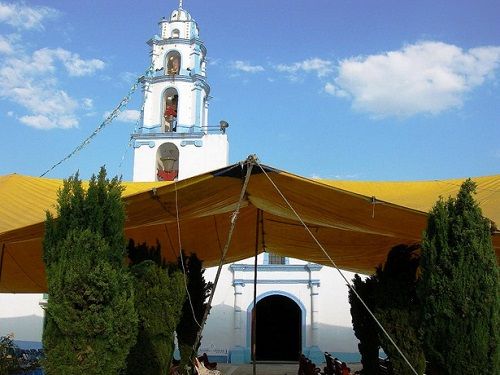
Excelente
344 Views
The Temple of Our Lady of Loreto in Espaùita was built between the 18th and 19th centuries. It preserves an atrial wall with pinnacles and a doorway with a pointed arch and reliefs in mortar. The façade has an entrance and a window that provides lighting for the choir, a three-body tower, two of which are circular, and is topped with a small chapel.
EspaĂąita is a municipality in the state of Tlaxcala, Atzatzacuala represents the ancient name of the current municipality of EspaĂąita, which comes from Nahuatl and means "place of dams", it has beautiful architectural places such as the Temple of Our Lady of Loreto, this temple was built between the 18th and 19th centuries, the Temple of La Magdalena, its construction dates back to the 19th century, the Temple of San Francisco, its construction dates back to the 17th century, the hacienda of Santiago Ameca was built in the 19th and 20th centuries, the hacienda of San Juan Mitepec the construction of this hacienda dates back to the 19th century and the hacienda of San Miguel Tepalca, was built in the 19th century, the celebration of the Patr
In the municipality of EspaĂąita, the most significant religious celebrations are held in four locations. In the municipal seat of EspaĂąita, the town's patron saint, "SeĂąora de Loreto", is celebrated. Religious celebrations begin 9 days before the main day (September 8). In Magdalena Cuexotitla, religious acts are held in honor of the town's patron saint, Santa MarĂa Magdalena. The main day is July 24. In San Francisco Mitepec, the religious celebration is in honor of the patron saint, San Francisco de AsĂs. On October 4, at noon, the traditional mass with three ministers is officiated. If October 4 falls on a weekday, the celebrations are transferred to the following Sunday. In the town of San Miguel Pipillola, the religious celebration is held in honor of San Miguel ArcĂĄngel. On September 29, the celebration takes place on that same day, since this date is not transferable.